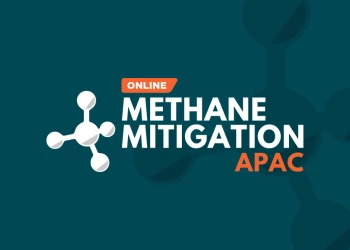"If You Fail To Prepare, Be Prepared To Fail": Getting It Right During A Turnaround
Add bookmarkSteven Suykens, Project Coordinator of Shutdowns for the Belgian Refining Corporation explains how to keep within the shutdown duration to attain efficient machinery up-time to Bryan Camoens. He also talks about the challenges to recognizing that shutdowns are repeatable events that follow a lifecycle and can be optimally challenged and planned through formalized processes and systems.
Bryan Camoens: In your opinion how do you keep within the shutdown duration to attain efficient machinery up-time?
Steven Suykens: You start with defining a 10 years outage plan, and from there on it is all about preparation. If the preparation is well, and the scope is well defined and there are not so many unforeseen or unknowns so to say, then you normally should be able to prepare, execute and close out the shutdown according the initially defined milestone plan. "IF YOU FAIL TO PREPARE, BE PREPARED TO FAIL."
Bryan Camoens: And with regards to that, what are some of the challenges you sort of face when attempting to put together this checklist before a shutdown?
Steven Suykens: We do not have to put them together anymore because we already have an entire checklist and review system, Bryan.
We have a master plan with milestones that has pre-defined turnaround reviews scheduled during the lifecycle of the project. Also here, if you start on time, you have time to perform the review checklists and address possible threats before they become a real issue. Typically for a High complexity turnaround, you start 25 months before the event. Medium complexity is 18 months and low complexity 14 months.
Bryan Camoens: What are some of the challenges to recognizing that shutdowns are repeatable events that follow a lifecycle and can be optimally challenged and planned through formalized processes and systems?
Steven Suykens: As mentioned before, we have a 10 - year outage plan, which is basically a plan to define when and what events will take place in that period. These events can be full scope turnarounds, legal requirement slowdowns, catalyst change outs or catalyst regeneration outages.
The challenge here is to plan and combine these outage in such a manner that you keep the downtime to an absolute minimum, and that you, if possible, combine units that are interdependent. You want to achieve minimum profit loss for the recurring small events.
The challenge of performing unplanned outages is something that you don’t really want but history has proven that they will happen and most of the time they happen when margins are peeking. How to deal with these kinds of challenges is hard to define en depends on the problem, situation, etc…
Bryan Camoens: How do you go about highlighting dynamic scheduling that focuses on defined roles and communication between the turnaround team, contractors, and operations to guarantee the continuity of the project and its 24/7 active schedule?
Steven Suykens: Well Bryan, we have 2 tools that help us in achieving that communication between stakeholders and which allows us to follow up progress and continuity.
The first one is primavera P6 for all scheduling activities. The first input in P6 is the operational planning which includes shutting down, preparing the units, commissioning the units after mechanical completion and handover, and re-starting the units.
The second input will come from all the lead times of the individual work packs. Based on those estimates the critical path is defined. These 2 inputs combined will result in the integrated overall project planning.
The second tool is a program that’s called ROSER Consys. It’s a turnaround or shutdown management system. It allows you to define, challenge and asses the scope. It’s used to make the workpacks. It allows you to, once the TAR has started, to follow up the progress per workpack. It makes sure that each step per workpack is signed of, tick box that says 100% final, before the next contractor can commence. And last, it also provides you the excellent tool for the entire QA/QC process.
[eventpdf]
Based on the critical path we tend to shut down and prepare that unit or equipment in the beginning of the turnaround given the biggest mechanical window possible. All critical or close to critical path items, are scheduled 24/7, inspection items and ESD testing for example are being executed on an 8- to 10-hour base.
Bryan Camoens: What are some of the current trends in plant shutdown, turnaround, and outage management that will shape the future of this sector?
Steven Suykens: 3 things I could think of. One, the quality of the QA/QC processes have drastically increased. These are driven by company policies, government rules, awareness and the fact that the overall standard/quality of labour people has decreased over the years.
The other is the use of specialized and custom made software to help you in preparing, executing and following up your turnaround projects. These have in our organization proven to be of great value.
Finally, the way we go about preparing our workpacks. We used to make the workpacks ourselves with the help of a third party. Then just prior to the shutdown we brought in the respective contractor and he
executed what someone else prepared.
Conclusion: this doesn’t work. Nowadays we get our contractors in from the beginning of the preparation phase, staggered process, and let them prepare there workpacks as they feel is best practice. It creates ownership, and the guys know exactly what is meant and what needs to be done.
|
Have Your Say Rate this feature and give us your feedback in the comments section below |











